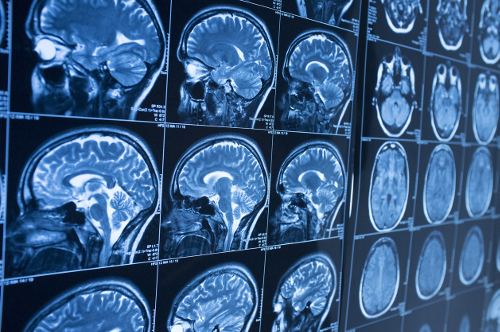 The term cyst can evoke a wide array of emotions, particularly if it is near your brain or spinal cord.
The term cyst can evoke a wide array of emotions, particularly if it is near your brain or spinal cord.
With an arachnoid cyst, the absence of symptoms will require regular monitoring of its size to ensure it does not compress on neighboring tissue and nerves.
If the cyst presents any of the various symptoms such as vertigo or coordination issues, you could be at risk for life-threatening complications. We will look closely at the symptoms and discuss treatment options.
What Is an Arachnoid Cyst?
An arachnoid cyst is a sac filled with cerebrospinal fluid, known as CSF, which can be found between the arachnoid membrane and the brain or spinal column. The arachnoid is one of the three protective membranes of the brain and spinal cord. The CSF is a protective fluid of the brain and spinal cord.
This is the more common of brain cysts and is hereditary, often present at the time of birth. In a few cases, an arachnoid cyst can develop after a major trauma to the head and is then referred to as secondary arachnoid cyst. Doctors typically see these cysts around the brain, but they can also develop at points of the spinal cord.
Once an arachnoid cyst develops, there can be serious complications, aside from the symptoms that present. If a cyst tears or ruptures, the CSF can leak and spread to other areas. Damage to the cyst can also cause the blood vessels to seep blood into the cyst and increase the size. A hematoma could also develop, and the sensation of increased pressure within the head can signal this.
Arachnoid Cyst Symptoms
Depending on the location and size of the arachnoid cyst, the symptoms can vary from mild to severe. The cyst may or may not present any symptoms. An arachnoid cyst at the brain may have the following symptoms:
- Nausea
- Vomiting
- Headache
- Seizures
- Vertigo
- Hearing issues
- Vision issues
- Behavior changes
- Hydrocephalus, collection of brain fluid
- Development delay
- Coordination problems
- Walking difficulty
- Weakness
- Paralysis
- Lack of muscle control
With an arachnoid cyst developing on the spinal cord, the symptoms reflect the compression of the spinal nerves. Signs and symptoms include:
- Back pain
- Leg pain
- Numbness of extremities
- Tingling of extremities
- Muscle spasms
- Weakness
- Bladder or bowel function issues
Arachnoid Cyst Causes
An arachnoid cyst that develops before birth is referred to as a primary arachnoid cyst. The cause of this type of cyst is not yet known, but it appears as a fetus grows in the womb. The arachnoid membrane may split, possibly due to a family gene.
The secondary arachnoid cyst, which occurs after birth, can be caused by several incidents and health conditions. Trauma to the head or spinal cord from a fall or accident could trigger the growth. A tumor on the spinal cord or brain, as well as a case of meningitis, can lead to an arachnoid cyst. In rare cases, arachnoid cysts form as a result of complications of surgery on the spinal cord or brain.
Health conditions that may cause an arachnoid cyst include Marfan syndrome, arachnoiditis, and agenesis of corpus callosum (ACC).
Arachnoid Cyst Diagnosis
To confirm a diagnosis, you can expect to have one of the two main diagnostic tests. A magnetic resonance imaging test, known as a MRI, will give an accurate picture of the tissue and nerves of the brain and of the spinal column. From this, a cyst of any size will show. An ultrasound can also detect arachnoid cysts by using the reflective sound waves to highlight the body’s internal system.
Arachnoid Treatment
Arachnoid cyst treatment is determined on the location, size, and whether there are any symptoms present. A cyst with no symptoms can be left untreated with frequent checkups to monitor any growth in size.
Now, if the arachnoid cyst is present with symptoms, it is important to treat immediately as it may grow and result in permanent damage to the spinal cord or brain cells, nerves, and tissues. With the close proximity of the cyst and delicate nerves and organs, specialists prefer to use techniques that release the pressure of the cyst rather than remove them.
It may be possible to drain with a needle aspiration or burr hole drainage technique. While this is a quick method, it only gives a temporary treatment as the cyst can return.
A surgical procedure will allow the CSF better flow by opening the cyst, and there will be also be the opportunity to examine the cyst itself. The only downside of this procedure is the possibility of scarring, which could cause the new opening to close completely or partially.
Another medical treatment is to shunt the cyst. This offers the easiest and less painful treatment to the patient. Many patients become dependent on the shunt, as it is a temporary bandage. Repetitive procedures can lead to complications.
An arachnoid cyst can be present before birth, since it may be caused by abnormal development of the brain or spinal cord. Genetic disorders may also be to blame. The cyst can appear after an injury to the head or to the spine as well. Most cases of an arachnoid cyst pose no risk, as long as they are asymptomatic and remain a small size. For those that tend to increase in size or offer symptoms, it is recommended to have the cyst drained.
Sources:
“Arachnoid Cysts,” Healthline; http://www.healthline.com/health/arachnoid-cysts#overview1, last accessed June 29, 2017.
“Arachnoid Cysts,” John Hopkins Medicine; http://www.hopkinsmedicine.org/healthlibrary/conditions/adult/nervous_system_disorders/arachnoid_cysts_22,arachnoidcysts/, last accessed June 29, 2017.
“Arachnoid Cysts/Intracranial Cysts,” Weill Cornell Brain And Spine Center; http://weillcornellbrainandspine.org/condition/arachnoid-cysts-intracranial-cysts/symptoms-arachnoid-cyst, last accessed June 29, 2017.
“Arachnoid Cysts,” Cedars-Sinai; https://www.cedars-sinai.edu/Patients/Health-Conditions/Arachnoid-Cysts.aspx, last accessed June 29, 2017.
“Arachnoid Cysts,” UCLA; http://neurosurgery.ucla.edu/arachnoid-cysts, last accessed June 29, 2017.
